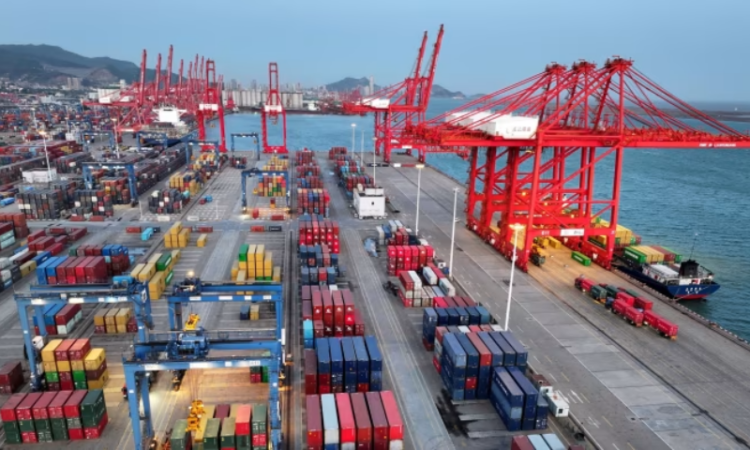Bangkok, April 14, 2025: China’s exports surged by 12.4% in March, marking a last-minute rush by companies to capitalize on lower tariffs before a scheduled increase by the United States. This came as businesses sought to beat the higher duties imposed by U.S. President Donald Trump, though analysts predict that exports will drop in the coming months due to the looming tariff hikes.
Imports, on the other hand, fell by 4.3%, totaling $211.3 billion in March, with exports reaching $313.9 billion, leaving a trade surplus of $102.6 billion.
Julian Evans-Pritchard from Capital Economics commented that the recent surge in exports is likely to be short-lived, stating that China’s exports may take years to recover to current levels. The country’s trade surplus reached a record $992.2 billion in 2024, and exports rose by 5.4%, helping offset sluggish domestic growth amid recovery from a property crisis and the aftermath of the COVID-19 pandemic.
Under Trump’s administration, tariffs on Chinese imports initially rose by 10%, later escalating to 20%. As of now, most Chinese goods face tariffs as high as 145%. In response, China has imposed retaliatory tariffs of 125% on U.S. products and restricted exports of critical minerals used in high-tech manufacturing, such as those needed for electric vehicle production.
China’s trade surplus with the United States stood at $27.6 billion in March, with exports growing by 4.5%. In the first quarter of 2025, the surplus with the U.S. reached $76.6 billion, despite a more modest increase in exports.
ING Economics noted that U.S. importers likely anticipated the tariff hikes and rushed to stockpile goods, but this trend is expected to reverse as inventories deplete and importers await further developments in U.S. trade policy.
Although the higher tariffs have led to a decline in exports of lower-value items like clothing and shoes, exports of high-tech products like electronics, computer chips, and household appliances saw significant growth. Rare earth exports, however, fell by nearly 11% in the first quarter due to China’s tightening controls on these materials, which are crucial for high-tech products.
China’s total exports in Q1 rose 5.8% year-on-year, while imports fell 7%, resulting in a trade surplus of $273 billion.
In a late Friday development, Trump exempted most computer-related goods, including laptops and smartphones, from the higher tariffs. These goods accounted for $174 billion in U.S. imports from China last year.
Despite the challenges, Chinese officials remain optimistic. Lyu Daliang, a spokesperson for the Chinese customs administration, emphasized the country’s diversified export markets and large domestic market, suggesting that the outlook remains positive.
The biggest increases in March exports were to Southeast Asia, where shipments grew by 8%, and exports to Africa and India also saw notable rises.
Chinese President Xi Jinping, currently on a regional tour in Vietnam, Malaysia, and Cambodia, is working to strengthen trade ties with neighboring countries as they too face rising tariffs. China’s exports to Vietnam rose nearly 17% in March, even as its imports from the country decreased by 2.7%.








